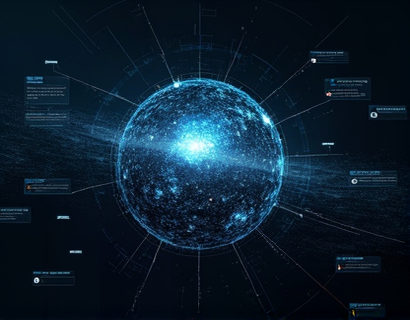Maximizing Multi-Channel Communication: A Strategic Guide for Businesses and Individuals
In today's fast-paced digital landscape, effective communication across multiple channels is crucial for businesses and individuals aiming to maximize their reach and engagement. This comprehensive guide provides expert strategies to streamline announcement processes and enhance message visibility across various platforms. Whether you are a business owner or an individual looking to optimize your multi-channel communication, this resource will offer valuable insights and actionable steps to ensure your messages resonate with your audience.
Understanding Multi-Channel Communication
Multi-channel communication refers to the strategy of using multiple platforms and channels to reach and engage with your audience. This approach allows you to connect with your audience through their preferred methods, whether it's social media, email, websites, or messaging apps. The key to successful multi-channel communication lies in consistency, clarity, and relevance of your messages across all platforms.
Benefits of Multi-Channel Communication
Adopting a multi-channel approach offers numerous benefits. Firstly, it increases your visibility and reach, as you can tap into different segments of your audience. Secondly, it enhances engagement by providing multiple touchpoints for interaction. Thirdly, it improves customer service by allowing for quicker and more diverse responses to inquiries and concerns. Lastly, a well-coordinated multi-channel strategy can significantly boost brand loyalty and trust.
Challenges in Multi-Channel Communication
While the benefits are clear, implementing a multi-channel communication strategy comes with its own set of challenges. One of the primary issues is maintaining consistency across all channels. Ensuring that your message, tone, and branding are uniform can be daunting, especially when dealing with a large team or multiple departments. Another challenge is managing the logistics of publishing content simultaneously across different platforms, which can be time-consuming and resource-intensive.
Strategies for Effective Multi-Channel Communication
To overcome these challenges, here are some expert strategies to optimize your multi-channel communication:
1. Develop a Centralized Content Management System
A centralized content management system (CMS) is essential for coordinating and publishing content across multiple channels. This system should allow for easy creation, editing, and scheduling of content. It should also provide real-time updates and analytics to track performance. By having a single platform to manage all your content, you can ensure consistency and efficiency.
2. Create a Content Calendar
A content calendar is a powerful tool for planning and organizing your multi-channel content in advance. It helps you visualize your publishing schedule, avoid duplicate posts, and ensure a balanced mix of content types. A well-structured content calendar can save time and reduce stress, allowing you to focus on creating high-quality content rather than managing the logistics.
3. Utilize Automation Tools
Automation tools can significantly streamline your multi-channel communication efforts. Tools like social media managers and email marketing platforms allow you to schedule posts, send newsletters, and engage with your audience without manual intervention. These tools can also help with monitoring analytics and adjusting your strategy based on real-time data.
4. Ensure Cross-Platform Consistency
Consistency is key in multi-channel communication. This includes not only the message and branding but also the timing and tone of your posts. Develop a brand style guide that outlines your messaging, visual elements, and tone of voice. Train your team to adhere to this guide to ensure a cohesive presence across all channels.
5. Engage with Your Audience
Multi-channel communication is not just about broadcasting messages; it's also about engaging with your audience. Respond promptly to comments, messages, and reviews across all platforms. Use analytics to identify the most active and engaged segments of your audience and tailor your content to meet their needs and preferences.
6. Monitor and Analyze Performance
Regularly monitoring and analyzing the performance of your multi-channel efforts is crucial for continuous improvement. Use analytics tools to track key metrics such as engagement rates, click-through rates, and conversion rates. This data will help you identify what works and what doesn't, allowing you to refine your strategy over time.
7. Train and Empower Your Team
Effective multi-channel communication requires a well-informed and skilled team. Provide training sessions to ensure that everyone understands the importance of consistency, the use of automation tools, and the overall communication strategy. Empower your team to make decisions and respond to audience interactions, fostering a more dynamic and responsive communication approach.
Best Practices for Multi-Channel Publishing
Here are some best practices to consider when publishing content across multiple channels:
1. Know Your Audience
Understanding your audience is the foundation of effective multi-channel communication. Conduct market research to identify the platforms your target audience uses most frequently. Tailor your content to suit the preferences and behaviors of each segment, ensuring that your message resonates with them.
2. Optimize for Each Platform
Each social media platform and website has its own unique features and audience. Optimize your content for the specific format and requirements of each channel. For example, use short, engaging videos for Instagram Reels and detailed, informative posts for LinkedIn articles.
3. Use Visually Appealing Content
Visual content tends to perform better across most platforms. Invest in high-quality images, infographics, and videos that complement your text-based content. Ensure that your visuals are consistent with your branding and are optimized for quick loading times to avoid frustrating your audience.
4. Encourage User-Generated Content
User-generated content (UGC) can significantly enhance your multi-channel strategy. Encourage your audience to share their experiences, photos, or testimonials related to your brand. UGC not only adds authenticity but also fosters a sense of community and engagement.
5. Leverage Influencers and Partnerships
Collaborating with influencers and other brands can expand your reach and credibility. Identify influencers who align with your brand values and have a genuine connection with your target audience. Partner with complementary businesses to co-create content or host joint events, benefiting from each other's audiences.
Case Studies and Real-World Examples
To illustrate the effectiveness of these strategies, let's look at a few real-world examples:
A well-known fashion brand successfully implemented a multi-channel communication strategy by using a centralized CMS to manage their content across websites, social media, and email newsletters. They created a content calendar to ensure consistent posting and utilized automation tools to schedule and monitor their content. The brand also trained their team to maintain a consistent tone and style, resulting in a cohesive brand presence. As a result, they saw a 40% increase in engagement and a 25% boost in sales.
Another example is a tech startup that focused on optimizing their content for different platforms. They created short, engaging videos for TikTok, detailed blog posts for their website, and informative infographics for LinkedIn. By using visually appealing content and tailoring it to each platform, they managed to increase their follower count and website traffic significantly.
Conclusion
Maximizing multi-channel communication is essential for businesses and individuals looking to enhance their visibility and engagement in today's digital world. By developing a centralized content management system, creating a content calendar, utilizing automation tools, ensuring cross-platform consistency, engaging with your audience, monitoring performance, and training your team, you can streamline your communication efforts and achieve better results. Remember, the key to success lies in consistency, clarity, and a deep understanding of your audience. With these strategies in place, you can effectively connect with your audience across multiple channels and drive meaningful growth for your brand.










































